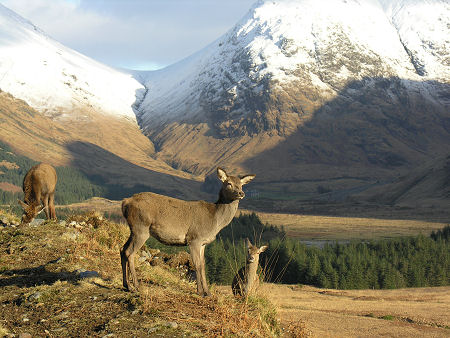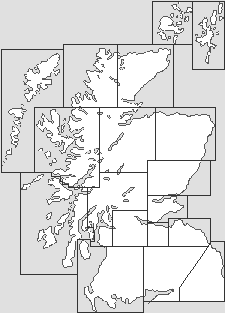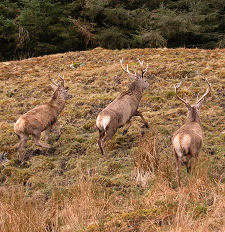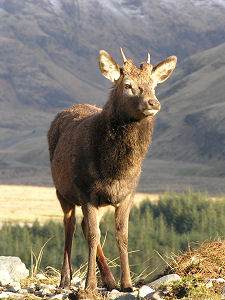 Red Deer Hinds in Glen Etive |
Figures differ greatly, but Scotland is home to around 750,000 deer, of which some 300,000 are Red Deer, the largest of Scotland's wild mammals. Deer stalking has long been an important land use across the Highlands and Islands. But as the numbers of hillwalkers in Scotland increased significantly from the 1960s, conflict between the aspirations of walkers on the one hand, and those of deer stalkers on the other, became an important issue affecting access to the outdoors in Scotland.
It's very easy for a hillwalker to think of the problem in one-dimensional terms: of access for the masses being impeded so that a wealthy landowning few can kill magnificent creatures whose antlered heads are seen adorning the halls of many large country houses.
The reality, as usual, is much more complicated. It is complicated because deer stalking provides over 300 full-time and over 500 part-time jobs in areas of Scotland in which employment is often fairly hard to come by. It is complicated because deer stalking makes a considerable contribution to the economy of many otherwise very poor areas of the country. And it is complicated because one person's "magnificent creature" is another person's overpopulated pest, which causes many road accidents, and which damages woodland, forestry, agriculture and habitats of great importance to other species. And when those calling for an increase in the culling of Red Deer include conservation bodies like WWF and the RSPB, it becomes clear just how very complex the situation really is.
From the late 1980s onwards, the shared aim of all those involved in access to the hills was one of peaceful coexistence of the different interests, primarily achieved through the exchange of information. A key element of this from 1996 was the Hillphones Scheme, under which estates left recorded messages about stag stalking activity in a number of mountain areas across Scotland.
This scheme has since been updated on the Heading for the Hills Website operated by Scottish Natural Heritage. The aim is to help hillwalkers find out where stag stalking is taking place and plan routes that avoid it.
This system was established well before the significant improvements made to outdoor access under the Land Reform (Scotland) Act 2003, but the way it balances potentially competing interests is completely in line with the new legislation, whose Scottish Outdoor Access Code recommends use of the Hillphones Scheme.
As background, the periods of the year during which deer can be hunted or culled varies depending on the species and gender of the deer. But from a hillwalker's point of view, the most important dates are those of the Red Deer stag stalking season, which runs from 1 July to 20 October each year. This is the period during which the Hillphones Scheme operates, and stalking becomes increasingly intensive from the beginning of September to the close of the season. Stalking never takes place on a Sunday, and neither does it take place on the extensive upland estates owned by the National Trust for Scotland. Finally, in the absence of other information, it helps avoid stalking activity if walkers' follow routes up and down ridges rather than through corries.
Red Deer hinds are culled from 21 October to 15 February, and far more hinds than stags are shot in any given year. But because this is much more a management than a sporting activity, and because there are typically many more hinds than stags on the hill, hind culling is far less likely to lead to conflicts of interest involving hillwalkers.


